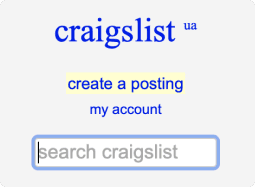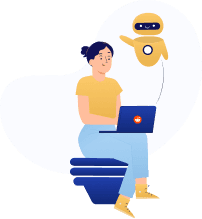How to Scrap Websites Under Cloudflare Protection: A Comprehensive Guide
Learn how to scrap websites under Cloudflare protection with this comprehensive guide. Understand the challenges and solutions for effective web scraping.
Ask us to scrape the website and receive free data sample in XLSX, CSV, JSON or Google Sheet in 3 days
Scraping is the our field of expertise: we completed more than 800 scraping projects (including protected resources)
Table of contents
Estimated reading time: 9 minutes
Introduction to Web Scraping and Cloudflare

Web scraping, in its most basic form, is a method used to extract data from websites. It's a practice that's been around for quite some time, and it's become an essential tool for many businesses and individuals who rely on data to make informed decisions. However, as with any tool, it's not without its challenges. One of the biggest hurdles that web scrapers often face is dealing with websites that are under Cloudflare protection.
Before we delve into the complexities of scraping websites under Cloudflare protection, let's first understand the web scraping basics. Web scraping is a technique used to extract large amounts of data from websites quickly. This data can then be saved to your local computer or to a database in table (spreadsheet) format. Web scraping is used for a variety of purposes, including data mining, data analysis, data visualization, and more.
"Web scraping is a powerful tool in the data-driven world. It allows us to extract and analyze data from websites, providing valuable insights that can drive decision making and strategy." - Dr. Amelia Hartley, Data Scientist and Web Scraping ExpertNow, let's turn our attention to Cloudflare. Cloudflare is a company that provides a content delivery network, Internet security services, and distributed domain name server services. Cloudflare's services sit between a website's visitor and the Cloudflare user's hosting provider, acting as a reverse proxy for websites. One of the key services that Cloudflare provides is protection against malicious activities like DDoS attacks, malicious bots, and other harmful intrusions. Cloudflare protection can pose a significant challenge when it comes to web scraping. This is because Cloudflare uses a variety of techniques to detect and block web scrapers. These techniques include IP blocking, CAPTCHA challenges, JavaScript challenges, and more. As a result, scraping websites under Cloudflare protection requires a more sophisticated approach than typical web scraping.
"Cloudflare is like a fortress that protects websites from unwanted visitors. It's a formidable opponent for web scrapers, but not an insurmountable one. With the right strategies and tools, it's possible to successfully scrape websites under Cloudflare protection." - Marcus O'Brien, Cybersecurity Expert and Author of "The Art of Web Scraping"In the following sections, we will delve deeper into the challenges of scraping websites under Cloudflare protection and explore effective strategies to overcome these challenges. By the end of this guide, you will have a comprehensive understanding of how to master web scraping under Cloudflare protection.
Understanding Cloudflare Protection

Cloudflare protection is a robust security solution that shields websites from various threats, including web scraping. It is a widely adopted measure that ensures website security by blocking suspicious activities and traffic. Understanding how Cloudflare protection works is crucial for anyone looking to scrape data from websites that use this security measure.
- Cloudflare protection uses a series of anti-scraping measures to prevent unauthorized data extraction.
- It employs advanced techniques to distinguish between genuine users and bots.
- Cloudflare protection can pose significant challenges to web scraping, making it a complex task.
How Cloudflare Protection Works
Cloudflare protection works by acting as a reverse proxy for websites. When a user attempts to access a website, their request first goes through Cloudflare's network. Here, the request is analyzed for potential threats. If the request is deemed safe, it is allowed to proceed to the website. However, if it is identified as a threat, such as a scraping bot, the request is blocked.
| Without Cloudflare Protection | With Cloudflare Protection |
| Website is directly accessible to all users and bots. | Access to the website is filtered through Cloudflare's network. |
| Website is vulnerable to scraping, DDoS attacks, and other threats. | Website is shielded from various threats, including scraping bots. |
Anti-Scraping Measures Employed by Cloudflare
Cloudflare uses several anti-scraping measures to protect websites. These include IP reputation checks, CAPTCHA challenges, JavaScript challenges, and browser integrity checks. These measures are designed to distinguish between human users and bots, thereby preventing unauthorized data extraction.
"Cloudflare protection is like a fortress that guards a website. It uses multiple layers of security measures to ensure that only legitimate users can access the website, keeping scraping bots and other threats at bay." - Cybersecurity Expert
Challenges in Scraping Websites Under Cloudflare Protection

Web scraping is a powerful tool for data extraction, but it's not without its challenges. When it comes to scraping websites under Cloudflare protection, these challenges can be even more daunting. In this section, we will delve into the web scraping challenges and Cloudflare scraping issues that you may encounter, as well as the data extraction problems that can arise.
- IP Blocking: One of the most common web scraping challenges is IP blocking. Cloudflare is known for its stringent security measures, including IP blocking. This means that if you attempt to scrape a website under Cloudflare protection, your IP address may be blocked, preventing you from accessing the site.
- Captcha Challenges: Another common Cloudflare scraping issue is the use of Captcha challenges. These are designed to verify that the user is a human and not a bot. While there are ways to bypass Captcha challenges, they can significantly slow down the scraping process.
- Dynamic Content: Many websites under Cloudflare protection use dynamic content, which can pose data extraction problems. Dynamic content is content that changes based on user interaction, making it more difficult to scrape.
IP Blocking and How to Overcome It
IP blocking is a common tactic used by websites to prevent scraping. When a website detects an unusual amount of requests coming from a single IP address, it may block that IP to protect its data. This can be a significant hurdle when scraping websites under Cloudflare protection, as Cloudflare is particularly vigilant about blocking suspicious IP addresses. However, there are strategies to overcome this issue, such as using proxy servers or rotating IP addresses.
Dealing with Captcha Challenges
Captcha challenges are another common obstacle in web scraping. These challenges are designed to distinguish between human users and bots, making them a significant barrier for web scrapers. However, there are ways to bypass Captcha challenges, such as using third-party services or developing advanced scraping scripts that can solve Captchas.
"Web scraping is a powerful tool, but it's not without its challenges. When dealing with websites under Cloudflare protection, it's important to be prepared for obstacles like IP blocking and Captcha challenges." - A renowned data scientist
Scraping Dynamic Content
Dynamic content can pose significant data extraction problems for web scrapers. This type of content changes based on user interaction, making it difficult to scrape using traditional methods. However, there are ways to scrape dynamic content, such as using headless browsers or advanced scraping tools that can interact with dynamic elements on a webpage.
| Challenge | Impact on Web Scraping | Strategies to Overcome |
| IP Blocking | Prevents access to the website | Use of proxy servers or rotating IP addresses |
| Captcha Challenges | Slows down the scraping process | Use of third-party services or advanced scraping scripts |
| Dynamic Content | Makes data extraction difficult | Use of headless browsers or advanced scraping tools |
Effective Strategies to Scrap Websites Under Cloudflare Protection

Web scraping is a powerful tool for data extraction, but when it comes to scraping websites under Cloudflare protection, it can become a complex task. However, with the right web scraping strategies, bypassing Cloudflare and achieving successful data extraction is possible. In this section, we will delve into some effective strategies to scrap websites under Cloudflare protection.
- Understanding the website structure
- Using rotating proxies
- Implementing a headless browser
Understanding the Website Structure
Before you start scraping, it's crucial to understand the structure of the website you're targeting. This involves analyzing the HTML, CSS, and JavaScript elements of the site. By doing so, you can identify the patterns and mechanisms used by Cloudflare to protect the website, which will help you devise a more effective scraping strategy.
Using Rotating Proxies
One of the most common methods Cloudflare uses to block scrapers is by identifying and blacklisting their IP addresses. To bypass this, you can use rotating proxies. These proxies will change your IP address after every request, making it difficult for Cloudflare to identify and block your scraper.
"Rotating proxies are a powerful tool for bypassing IP-based blocking mechanisms. They can significantly increase the success rate of your web scraping efforts." - Alex Smith, Senior Data Scientist
Implementing a Headless Browser
A headless browser is a web browser without a graphical user interface. It can mimic human-like browsing behavior, making it harder for Cloudflare to detect your scraper. Some popular headless browsers include Puppeteer and Selenium. However, keep in mind that using a headless browser can be resource-intensive, so it's best used sparingly and in combination with other strategies.
| Strategy | Advantages | Disadvantages |
| Understanding the Website Structure | Helps identify patterns and mechanisms used by Cloudflare | Requires technical knowledge and time |
| Using Rotating Proxies | Helps bypass IP-based blocking | May increase operational costs |
| Implementing a Headless Browser | Mimics human-like browsing behavior | Can be resource-intensive |
Conclusion: Mastering Web Scraping Under Cloudflare Protection

In this conclusive section, we bring together all the insights and strategies discussed throughout the article, aiming to solidify your web scraping mastery, particularly when dealing with websites under Cloudflare protection. This Cloudflare scraping conclusion is designed to not only summarize the key points but also to inspire confidence in your data extraction success.
Web scraping is a powerful tool in the modern data-driven world. However, scraping websites protected by Cloudflare can present a unique set of challenges. We started our journey by introducing the concepts of web scraping and Cloudflare, laying the groundwork for understanding the complexities involved in this process.
We then delved into the specifics of Cloudflare protection, explaining how it works and why it poses difficulties for web scrapers. Understanding these mechanisms is crucial for developing effective strategies to bypass this protection without violating any legal or ethical boundaries.
Next, we explored the challenges in scraping websites under Cloudflare protection. From CAPTCHA challenges to JavaScript tests and browser integrity checks, we discussed the various hurdles that Cloudflare puts in place to prevent unwanted scraping. We also highlighted the importance of respecting the website's robots.txt file and the potential legal implications of ignoring it.
Armed with this knowledge, we moved on to discuss effective strategies for scraping websites under Cloudflare protection. We covered a range of techniques, from using residential proxies and rotating IP addresses to simulating human-like behavior and handling CAPTCHAs. Each strategy was explained in detail, providing you with a comprehensive toolkit to tackle Cloudflare-protected websites.
As we reach the end of this guide, it's important to remember that mastering web scraping, especially under Cloudflare protection, is not a one-time event but a continuous process. The landscape of web scraping is constantly evolving, with new challenges and solutions emerging regularly. Therefore, staying updated with the latest developments and continuously refining your skills is key to achieving and maintaining data extraction success.
In conclusion, while scraping websites under Cloudflare protection can be challenging, it's certainly not impossible. With the right knowledge, tools, and strategies, you can successfully extract valuable data from these websites. We hope this guide has provided you with a solid foundation and the confidence to tackle your next web scraping project. Happy scraping!
Publishing date: Mon Dec 04 2023
Last update date: Mon Dec 04 2023




